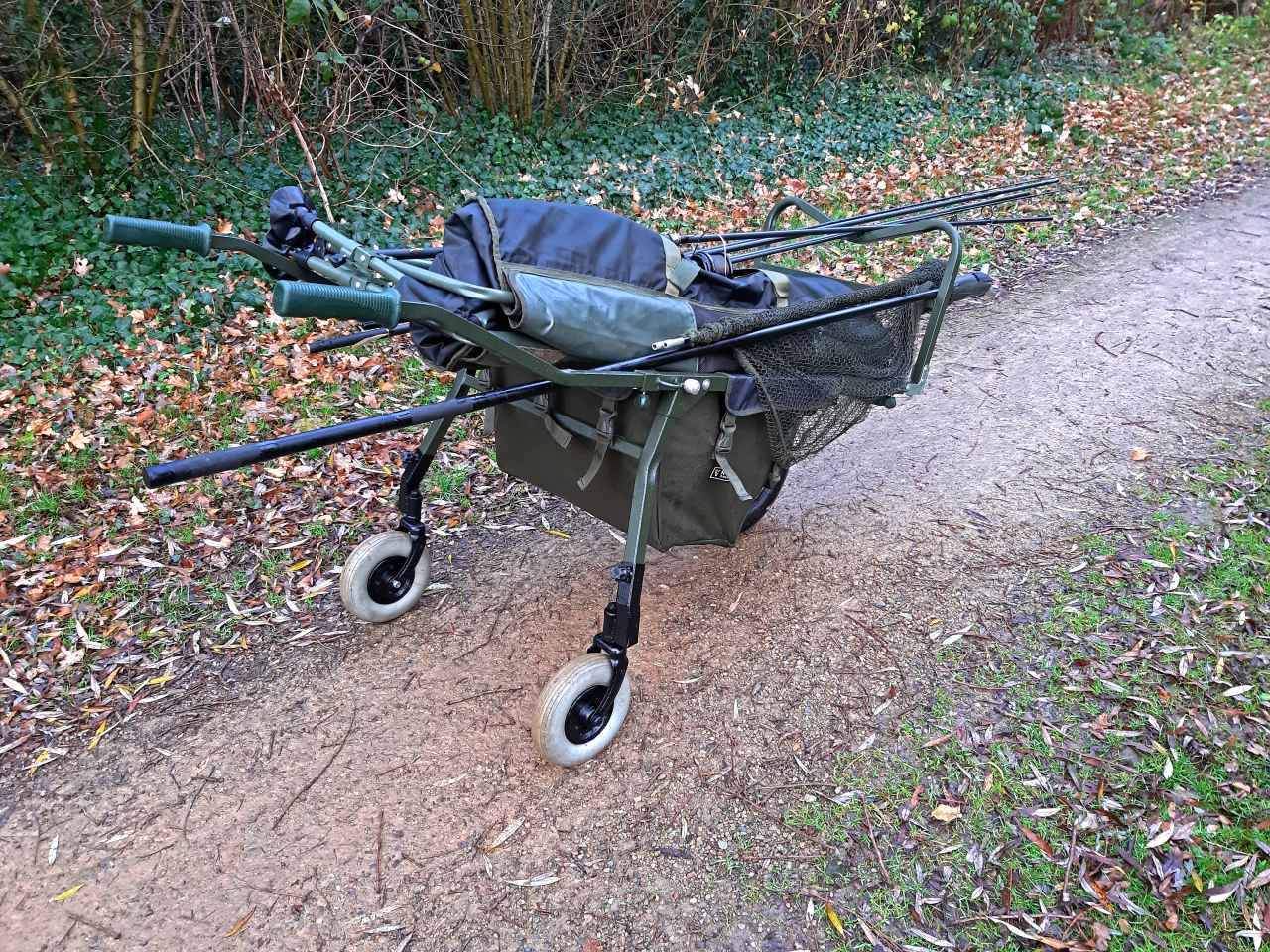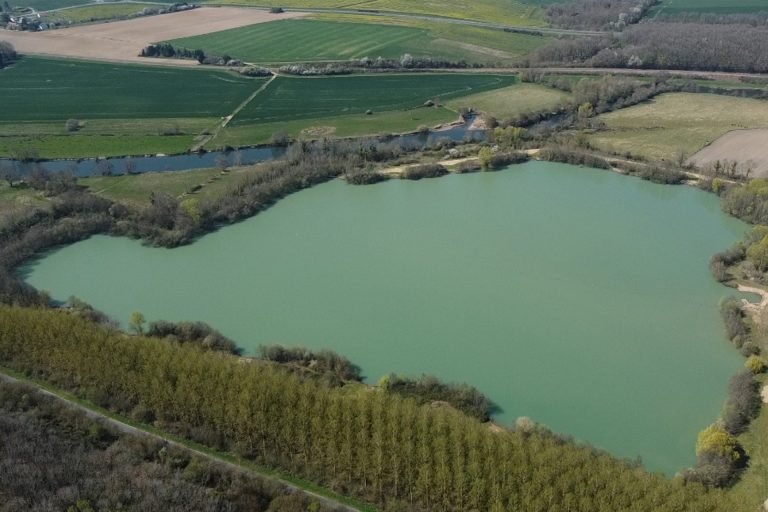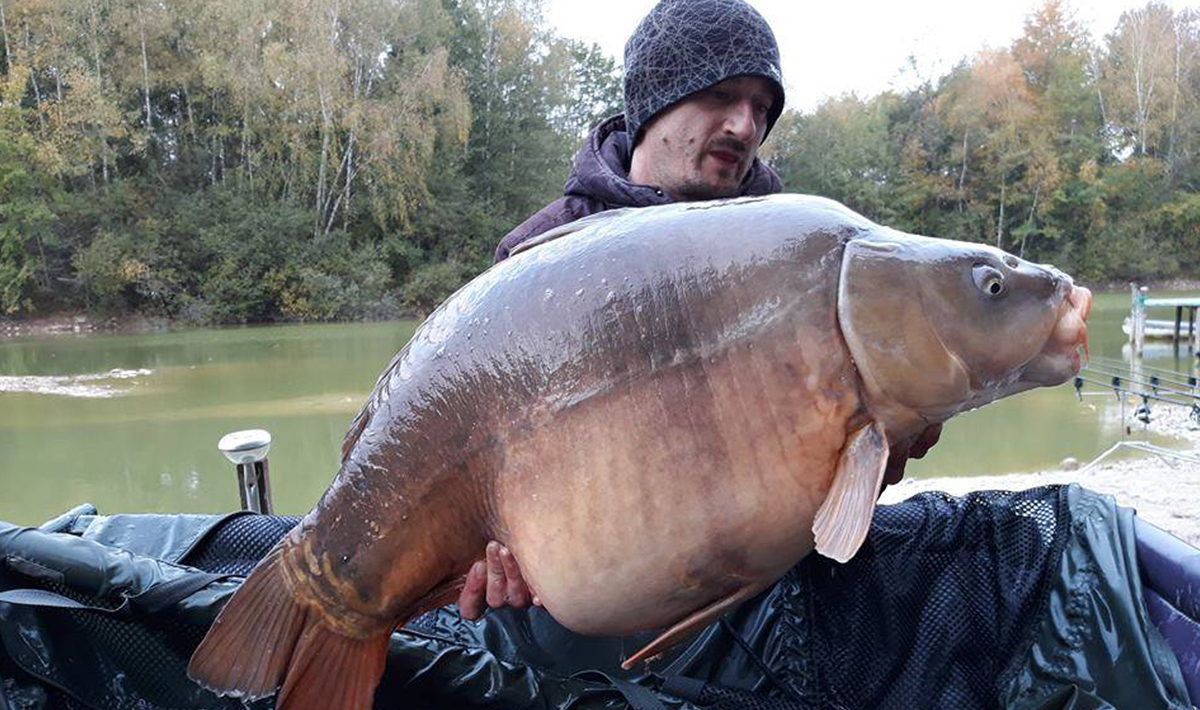What I find a fun activity during the winter period is static stalking for carp. Not on public waters but in park waters, small lakes, enclosed canals, or channels. In this article, I’ll explain how I do it.
You might wonder why not on public waters. This is possible, but the reason I don’t do it is that the fish are not as easy to spot there anymore. The carp often move to deeper areas to overwinter, and the chance of catching one is small.
What Do You Take with You?
The gear you bring should be as compact as possible. You move around a lot, so it’s handy to only take the essentials. Mobility and quick movement are key in static stalking. Two rods, banksticks with bite alarms, an unhooking mat, a landing net, and some small gear. And some bait, that’s all you need.

A trolley isn’t necessary, but it’s convenient if you have to walk long distances.
Searching for the Carp
Searching for carp starts with observing the water. The fish will look for sheltered spots during the cold periods. Carp are not as active in the winter period, so they won’t move around much. Look for places where the carp can hide, such as overhanging or fallen trees, culverts, bridges, or around duck decoys. These are ideal places for carp to overwinter.

Moving and observing in search of the carp
How to Fish?
In static stalking, you’re much more active, which is also nice in colder periods. Since carp like to hide under trees, duck decoys, and bridges, you might encounter obstacles here. Therefore, fish close to your rods and don’t set your baitrunners too loose. After all, you don’t want the fish to swim into a snag.
Observing the Water
When observing the water, pay close attention to small movements, small ripples, bait bubbles, and such signs, as the fish will hide there. When you have a good feeling about a spot, take action. Prepare your hook bait, some crushed boilies in the PVA, and place it just before the spot to avoid disturbing the fish too much. I usually throw a few loose 15 mm boilies around it myself. This is to trigger the fish to start feeding. It’s important not to overfeed, as they feed much less and for shorter periods in colder times.
Time to Move
If there’s no action from the spot after an hour or an hour and a half, it’s time to move to another spot. This way, you fish the water until you find the fish. If you do get action on the spot, of course, you stay longer. This is a fun way of fishing, you’re more active than with static fishing, and in the winter period, you really have to search for the carp. The carp won’t come to you!

Only on the third spot did we find the fish, resulting in a beautiful koi.
Good luck!
Greetings Marcel



